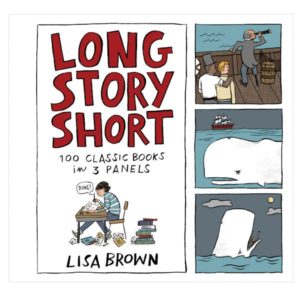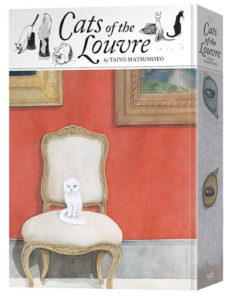Good Mail Day: A Primer for Making Eye-Popping Postal Art by Jennie Hinchcliff and Carolee Gilligan Wheeler
In 2014 we, meaning Post Art Library (the privately funded not-for-profit arts organization located inside Joplin Public Library since 1981), put out a call for entry for mail art. The idea was to create a one-off exhibit of mail art received from all over the world to introduce locals to the medium and encourage their participation. At the time, I was myself somewhat new to engaging with mail art and my experience with the world-wide mail art Network – yes, that’s a thing – was limited at best. Yet there I was, helping to coordinate a mail art call for entry and co-curate the resulting show. Enter Jennie Hinchcliff and Carolee Gilligan Wheeler’s Good Mail Day: A Primer for Making Eye-Popping Postal Art.
This book differs from other mail art books that I’ve read (such as Mail Me Art by Darren Di Lieto and Correspondence Art, edited by Michael Crane and Mary Stofflet, both of which are wonderful) in that it’s not only a gallery of mail art, but a sort of mail art workshop, as the authors offer oodles of advice for how to make mail art, start a mail art project, and navigate the mail art world. Plus, it introduces readers to mail art terminology and, perhaps most importantly, mail art etiquette.
But what’s mail art? A basic, common definition of mail art (a.k.a. correspondence or postal art) is that mail art is when people send small-scale works of art to one another through the postal service, often with the package itself being considered the work of art. Frankly, that definition falls flat and fails to describe the vibrancy of this decades-long movement. In my experience, the best way to describe mail art is to hand someone a stack of it. The only sure thing about mail art is that it is, as Hinchcliff and Gilligan Wheeler write, for everyone: “Anyone can be a mail artist, regardless of skill level or style of artwork.” The mail art itself is all over the place and all mediums are welcome. (The authors remind us, however, not to send anyone anything that we don’t want to deal with in our own mailboxes, such as perishable items.)
Although mail art is for everyone, the Network, like any other, has some basic rules. Namely, that “every piece of mail art that comes into your mailbox should receive some sort of acknowledgement in return.” That is, send something back! In the mail art world, this reciprocity is known as documentation. “No returns” is another tenet of mail art exchanges, meaning that each piece you receive is yours to keep, just as each piece you send out is someone else’s to keep. I appreciate that Hinchcliff and Gilligan Wheeler tell us the rules and “Time-honored Traditions” of mail art culture at the start. It’s as if they’re telling us that if we cannot respect those rules, then we needn’t read further or participate.
Of course, there are non-Network rules that mail artists must abide by, such as those of the postal service (or services, when mailing internationally). As such, we’re reminded to become familiar with our local postal regulations and to keep in mind that mail is categorized based not only on shape, but on thickness and weight. For example, if an envelope exceeds the maximum dimensions or thickness, then it may be categorized as a package and, accordingly, require more postage. The chapter that touches on regulations also includes “The Ten Commandments of Mail Art,” “The Seven Sins of Mailing,” and “Seven Suggestions for Shepherding Your Mail Art Safely to Its Destination.” You’ll also find tips on wooing your mail carrier and becoming friends with those who work in the post office.
The bulk of the book isn’t about defining mail art or mail art rules, but about having fun and making mail art. A few pages cover turning everyday objects, such as produce stickers, wrappers, leaves, and bird feathers into mailable mail art. What to do with those old dryer sheets? Mail them! As the authors discovered, they make for durable mail art. The point is that you may creatively make use of whatever you have nearby and whatever you find laying around, like found objects, old catalogs, junk mail, etc.
Ideas for decorating and illustrating envelopes, whether ready-made or those you create yourself, are included in this title, as are other techniques, such as paper-folding, texturing, and creating patterns, as well as stenciling, faux postage and artistamps, refining your handwriting, finding pen pals, and developing your postal personality.
My old friend, Chapter 10, details how to start a mail art project of your own, including writing a call for entry, creating documentation, and developing a correspondence register, which is more involved than keeping a list or address book of mail art contacts because it has more information. For example, a correspondence register might have columns for name, address, what you received, when you received it, what you sent back, when you sent it, and any other tidbits that you’d care to include. Trust, when coordinating a mail art project, which involves sending documentation (i.e. mail art thank yous) to those who send to you, a register is handy!
“You Can Take It with You: The Traveling Mail Art Kit,” is one of my favorite chapters. In the chapter, the authors emphasize that “mail art can happen anywhere, at any time, and in any place.” Think a waiting room that you’re stuck in, when you’re on hold making a phone call, or utilizing public transportation, or some such situation. The idea behind the mail art kit is that it’s possible to make mail art even when time is limited. The “Suggested Items for a Well-stocked Mail Art Kit” list is great, though your kit may contain whatever you like. What’s in my kit varies from time to time, though at minimum it includes stamps, stationary, and a few envelopes.
Peppered throughout the book are mini-interviews with mail artists from around the world, as well as great visuals, with the book ending with a mail art gallery followed by a contributor’s list, further resources, and an envelope template. Interestingly, the authors became friends when getting to know one another through mail art after meeting at a book arts event. Thus, the mail art that they’ve exchanged is a visual account of how their friendship developed—so cool!
So, is Good Mail Day a good primer for aspiring mail artists? Indeed, as it continues to guide me through what started as a one-off mail art project in 2014 and has since turned into an ongoing project for our growing collection. At the time of this writing, we have 300+ pieces of mail art from around the world in our collection and we’re about half-way into our third mail art exhibit, which is accompanied by an active call for entry. Visit us at www.postartlibrary.org to learn more about Post Mail Art Projekt 2021: Show Me Mail Art and check out Hinchcliff and Gilligan Wheeler’s Good Mail Day to learn how to get started.
As always, happy reading. And happy mailing!




